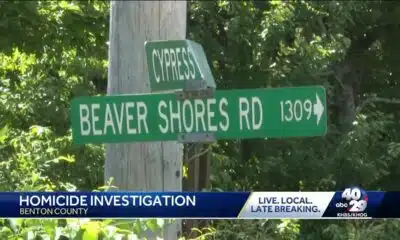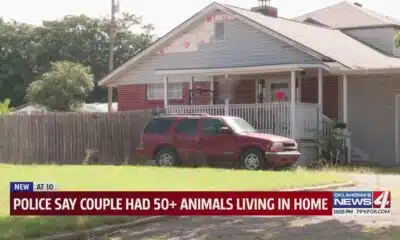News from the South - Kentucky News Feed
Study in contrasts: Racing, breeding shine in Kentucky as sport dims across America
by Tim Sullivan, Kentucky Lantern
April 28, 2025
Beyond Kentucky’s borders, horse racing is a sport in steep decline. Within the commonwealth, however, wealth is common.
Though no fewer than 48 American racetracks have closed since 2000, Kentucky operators continue to invest hundreds of millions in their facilities and are reaping an outsized return, and not only on the first Saturday in May.
For instance:
Churchill Downs Inc. reported record net revenue ($2.7 billion) and net income ($427 million) for 2024.
Keeneland’s September Yearling Sale netted a record $427.9 million.
The 2006 races run in Kentucky in 2024 paid an average purse of $112,648, 20% higher than the second most lucrative state (Arkansas).
September’s seven-day all-grass meet at Kentucky Downs in Franklin paid out $490,789 per race, easily the highest total ever recorded at a North American track.
“Retreat to Kentucky if you want a future in racing,” California horseplayer Andy Asaro tweeted on April 15. “Things are moving fast.”
Beyond the Bluegrass, things are moving mostly in reverse. Jockey Club data shows the number of Thoroughbred races run in the United States has dropped by more than 50% since 1995, and the size of the national foal crop has been falling even faster, from 34,358 in 2007 to an estimated 16,675 last year. The Sonoma County Fair recently announced it will forego live racing for the first time since 1936 because of a shrinking supply of horses in Northern California. Last month, the Louisiana Supreme Court ruled the state’s historical horse racing machines unconstitutional, prompting Churchill Downs Inc. to project a 25% cut in purses at its Fair Grounds racetrack.
Slots-lite a double-edged sword
Meanwhile, “decoupling” legislation that could free Florida gaming operators of the obligation to stage live racing as a condition of their licenses has been stalled, but may only represent a temporary reprieve from redevelopment of major tracks. The Stronach Group’s 1/ST Racing, which owns Gulfstream and Santa Anita, has threatened to sell both tracks while showing a pronounced inclination to divest rather than invest in its properties. Last year, the company closed Golden Gate Fields near San Francisco and cut a deal that turned over Baltimore’s Pimlico, the home of the Preakness Stakes, to the state of Maryland.
Against this gloomy backdrop, and in contrast to its own contentious closure of Arlington Park near Chicago, Churchill Downs Inc. continues to spend aggressively on its flagship track. Plans for new capital projects with a projected cost of $920 million were put on pause last Wednesday, ostensibly in response to the uncertainty surrounding tariffs and trade disputes, but recent improvements to the paddock and the addition of Homestretch Club and Turn One Experience cost in excess of $300 million and speak to management’s long-term bullishness.
While these investments are largely attributable to the singular appeal of the Kentucky Derby, they also reflect the thoroughbred industry’s political influence in Frankfort and, in turn, the gushing revenue stream historical horse racing (HHR) terminals have unleashed.
Since their 2011 introduction at Kentucky Downs, the slot-like historical horse racing terminals have reinvigorated racing in the state. Programmed to pay out based on the results of races previously run, Kentucky’s HHR machines generated more than $9.6 billion in handle during the 2024 fiscal year, accounting for $99 in bets for every $1 wagered live at the state’s thoroughbred and standardbred tracks.
They contributed $55.5 million to Kentucky’s Thoroughbred Development Fund during that 12-month period, fueling the growth of purses that have more than doubled since 2017. Consequently, Eric Hamelback, CEO of the National Horsemen’s Benevolent and Protective Association, refers to HHR’s proliferation as racing’s “golden ticket.”
When HHR’s legality was challenged in 2018, Ellis Park General Manager Jeffery Inman said the loss of that revenue would “likely threaten the very survival of one of Kentucky’s iconic racing venues.” Though opposition was vocal, it was handily outvoted. Attorney Ryan Roark, in an article published in the Kentucky Law Journal, wrote that the legislature settled on a definition of pari-mutuel wagering “not shared by anyone outside Kentucky … to allow for the powerful horse industry to exclusively run their slot-like gaming systems.”
The result, says Churchill Downs CEO Bill Carstanjen, has been a “juggernaut.” According to the Kentucky Horse Racing Commission, gross HHR commissions for Churchill Downs’ two Derby City Gaming locations exceeded $224 million for the 2024 fiscal year, nearly 12 times the total commissions from on-track wagering at all of the state’s racetracks.
To the extent this disparity underscores the industry’s reliance on revenue sources that require no physical horses, it inevitably raises questions about racing’s sustainability and the best use of its real estate.
“Racing is on life support in Southern California, Florida, Delaware, Pennsylvania etc. and exists almost everywhere else only with the support of non-racing revenues from slots, casinos and state supplements,” Kenwood Racing founder H. Robb Levinsky wrote in a January letter to Thoroughbred Daily News. “Instead of embracing innovative ideas to make the sport more attractive to a new generation of racing fans and owners, the focus continues to be on protecting those non-racing revenues. An industry where 80-90% of purse money comes from slots instead of wagering on the core product is simply not viable in the long run.”
Signs of progress in New York, Maryland
In the short run, at least, the growth of Kentucky’s purses has led to a higher quality of horses competing in the state, more interest among bettors and a breeding boom running contrary to national trends. As Ed DeRosa documented for Horse Racing Nation, Kentucky passed both California and Florida in total handle in 2024 after trailing both states annually since 2007.
“We’re the only jurisdiction (among the top four states) that has grown since 2020,” said Chauncey Morris, executive director of the Kentucky Thoroughbred Association. “The rest have contracted.”
And as cash incentives for Kentucky-breds have increased, so has the state’s share of registered foals. When HHR was introduced at Kentucky Downs in 2011, Kentucky produced 29.2% of the national foal crop. In 2023, the most recent year for which statistics are available, it was 42.2%.
“In states where racing has a good relationship with state legislators, racing is in good shape,” said consultant Damon Thayer, formerly the Kentucky Senate’s majority floor leader. “In states where they have not cultivated a long-term relationship with the legislature, horse racing is either in a declining state, a crisis state or a questionable state.”
In addition to Kentucky, there are pockets of progress. New York and Maryland have committed nearly a billion dollars to renovations at Belmont Park and Pimlico. Multiple industry executives cited developments in Wyoming, the nation’s last populous state, as a basis for bullishness. Yet their optimism is tempered by unsolved problems in larger locales, including the most populous state, California.
Without supplemental income from other forms of gambling, California’s racing and breeding businesses have been contracting for decades. Efforts to enhance purses through HHR remain at the discussion stage in view of Native American tribes’ virtual monopoly on the state’s casino gaming. Unless some accommodation can be reached, racing columnist Ray Paulick warns, “racing in California is history.”
“You can put 1,000 HHRs in at Santa Anita and it would change California racing overnight,” Thayer said. “They’d be wildly popular. You’d direct the money to purses and breeders reward programs and it would be a huge success. It seems like some sort of attempt should be made to cut a deal with the Indians and convince them that 1,000 HHRs at Santa Anita is not going to damage their land-based casinos. . .
“Like Cyndi Lauper used to say, money changes everything.”
YOU MAKE OUR WORK POSSIBLE.
Kentucky Lantern is part of States Newsroom, a nonprofit news network supported by grants and a coalition of donors as a 501c(3) public charity. Kentucky Lantern maintains editorial independence. Contact Editor Jamie Lucke for questions: info@kentuckylantern.com.
The post Study in contrasts: Racing, breeding shine in Kentucky as sport dims across America appeared first on kentuckylantern.com
Note: The following A.I. based commentary is not part of the original article, reproduced above, but is offered in the hopes that it will promote greater media literacy and critical thinking, by making any potential bias more visible to the reader –Staff Editor.
Political Bias Rating: Centrist
The content provided primarily focuses on the state of horse racing in Kentucky and the economic factors surrounding it, without overt political ideologies or agendas. It presents factual data regarding revenue, investments, and industry trends while addressing challenges faced by the sport in a straightforward manner. The analysis includes both positive developments (such as revenue growth) and negative trends (such as declines in racing overall), indicating a balanced approach. While there are mentions of legislation and the influence of the horse racing industry on politics, these elements are presented contextually rather than as a critique or endorsement of specific political positions. Thus, the piece maintains a centrist tone.
News from the South - Kentucky News Feed
Soaking rains finally moving out tonight
SUMMARY: Soaking rains brought flooding to Southern Indiana, especially Clark and Washington counties, with some areas receiving up to two inches of rain. Flash flood warnings were extended until 12:15 a.m. due to continued rainfall. While storms will taper off overnight, scattered showers and storms are expected each afternoon through Monday, with the strongest activity near the parkways. Temperatures will remain in the upper 80s to low 90s, with patchy fog possible in the mornings. Drier weather is forecast by midweek, but that will bring rising temperatures into the mid-90s and heat indices climbing well into the triple digits.
WLKY meteorologist Eric Zernich’s Thursday night forecast
Subscribe to WLKY on YouTube now for more: http://bit.ly/1e5KyMO
Get more Louisville news: http://www.wlky.com
Like us: http://www.facebook.com/wlkynews
Follow us: http://twitter.com/WLKY
Instagram: https://www.instagram.com/wlky/
News from the South - Kentucky News Feed
Morgantown resident throws first pitch at Great American Ballpark
SUMMARY: Butler County native Jason Mode, who has worked 14 years at McCormick Equipment, was honored to throw the first pitch at Great American Ballpark on July 12 before the Cincinnati Reds game against the Colorado Rockies. Mode, a baseball enthusiast with both children playing for the Butler County Bears, found the moment especially meaningful after his son’s recent emergency eye surgery. Despite being selected from 300 employees, Mode felt the day was surreal and unforgettable. He hopes to return someday to pitch while his son or daughter catches, treasuring the family connection to the sport and this once-in-a-lifetime opportunity.
The post Morgantown resident throws first pitch at Great American Ballpark appeared first on www.wnky.com
News from the South - Kentucky News Feed
2 new candidates — a physician politician and former federal prosecutor — enter US House race
by McKenna Horsley, Kentucky Lantern
July 17, 2025
Kentucky’s race for an open U.S. House seat got two new candidates — one from each party — Thursday morning.
Republican Dr. Ralph Alvarado, a former Kentucky lawmaker, and Democrat Zach Dembo, a former federal prosecutor, announced they’re running.
Alvarado has been Tennessee’s health commissioner since 2023, a post he held until recently announcing that he was considering a run for Congress from Kentucky.
The two new candidates bring the field to six, three from each party. The 6th Congressional District seat is up for grabs because its current holder, Republican Andy Barr, is running for U.S. Senate in hopes of succeeding Republican Mitch McConnell, retiring after seven terms.
Democrat Cherlynn Stevenson, a former Kentucky House Democratic caucus chair, has gained an early fundraising lead according to recent campaign finance reports. David Kloiber, a former Lexington council member, is also running for the Democratic nomination.
Alvarado joins Republicans state Rep. Ryan Dotson who announced his campaign earlier this year and state Rep. Deanna Gordon who launched her bid last week.
The primary election will be held in May 2026.
Alvarado: ‘Shoulder to shoulder with President Trump’
In his announcement, Alvarado, a physician, said he would “stand shoulder to shoulder with President Trump in Washington, to secure the border, revive the economy, and put America first.”
Alvarado describes himself as “a proud son of immigrants and a relentless defender of the American Dream.”
He said Trump is “under attack from every direction, and he needs reinforcements in Congress.”
Alvarado said in Congress he would “fight to lower healthcare costs, save rural hospitals, and stop illegal immigrants from abusing Medicaid,” as well as fight for Kentucky’s signature industries “including bourbon, thoroughbred horse racing and manufacturing.”
Alvarado was born in California, the son of a father from Costa Rica and mother from Argentina.
He became Kentucky’s first Hispanic legislator after unseating incumbent Democrat R.J. Palmer in a 2014 state Senate race from a district made up of Clark and parts of Fayette and Montgomery counties.
Alvarado spoke at the 2016 Republican National Committee in support of Trump. He was Republican Gov. Matt Bevin’s running mate in Bevin’s losing 2019 bid for reelection.
In his farewell speech to the Senate in January 2023, he said, “I love solving problems. … Work is play for me. When I wake up, my mind clicks and I can’t really turn it off until I go to bed. When I am in social gatherings with many of you, I pursue discussions about policy. Some of you have said, ‘Ralph, let it go. We’re not on the clock.’ The problem is that I’m always on the clock. I have a really hard time turning it off. It’s both a blessing and a curse.”
Tennessee’s Republican Gov. Bill Lee appointed Alvarado commissioner of the Tennessee Department of Health. He recently left the Tennessee post after saying he likely would run for Congress from Central Kentucky in response to state Sen. Amanda Mays Bledsoe’s announcement that she would not be seeking the seat.
In his announcement, Alvarado said he and his wife, Dawn, still live in Clark County where they raised their two children and are “active members of their church and community.”
Dembo: ‘D.C. corruption getting in the way of helping folks in Kentucky’
A former federal prosecutor and staffer for Gov. Andy Beshear, Dembo, a Lexingtonian, left his job as an assistant U.S. attorney in the Department of Justice earlier this year amid Trump’s return to the White House.
“I couldn’t stand by while the administration was playing politics with the justice system to carry out a personal political agenda instead of protecting the Constitution,” Dembo said in a telephone interview with the Kentucky Lantern. “And I felt like D.C. corruption was getting in the way of helping folks in Kentucky. So I wanted to continue serving my country, but obviously my public service had to take a different path, and that’s why I’m running for Congress now.”
Dembo previously worked in the U.S. Department of Justice during the first Trump administration, but said that “while there were many things I disagreed with, personally and politically, I still felt that everyday line prosecutors were able to do their job at DOJ.”
In February, several federal prosecutors resigned after being directed to drop charges in a corruption case against New York Mayor Eric Adams. More recently, Reuters reported earlier this week that 69 of the roughly 110 lawyers in the DOJ’s federal programs branch, which is tasked with defending legal challenges to the president’s policies, have left the unit since Trump’s recent election or plan to leave.
“This second administration, as we’ve seen through many publicly reported things, is not the same,” Dembo said, adding that “prosecutors are being asked to do things that are immoral, unethical” and facing being fired if they do not go along with it.
In addition to his decision to leave the DOJ, Dembo also has concerns about the recently passed GOP megabill, which included cuts to Medicaid and Supplemental Nutrition Assistance Program funding. Barr voted in favor of the bill, and has supported other Trump policies as he seeks the Republican nomination for U.S. Senate.
“The current congressman is voting very enthusiastically in favor so that he can give tax breaks to his rich buddies and coastal elites, which, again, that’s just not the Kentucky values I was raised with,” Dembo said of Barr.
Dembo plans to distinguish himself from his opponents by focusing on his background as a Navy veteran and federal service. However, he said he is “clear-eyed” that voters may not know him at present. But he remains optimistic that his background in public service, in Kentucky and the district will “connect with voters.”
“Certainly that’s going to be an uphill battle with maybe the name ID, but at the same time, I think it’s a real advantage at a time where people are looking for new and fresh ideas, so I will definitely be looking simply to add to the conversation, not to tear anyone down,” Dembo said.
Dembo has taken some lessons from Beshear. The governor named Dembo as his policy adviser in 2020. Dembo was later promoted to become Beshear’s legislative director.
“Something that I learned from Gov. Beshear is that I don’t think that Kentuckians primarily are waking up thinking about who they vote for or what party they’re registered. I think they’re worried about their families and how they can be successful and have a good paying job and make ends meet,” Dembo said.
“So that’s very much how I’m going to approach it, and it’s not going to be as important to me what party someone identifies with, because if I’m lucky enough to get elected, I’m going to represent all of them.”
This story was updated early Thursday morning to include Republican Ralph Alvarado’s announcement.
Kentucky Lantern is part of States Newsroom, a nonprofit news network supported by grants and a coalition of donors as a 501c(3) public charity. Kentucky Lantern maintains editorial independence. Contact Editor Jamie Lucke for questions: info@kentuckylantern.com.
The post 2 new candidates — a physician politician and former federal prosecutor — enter US House race appeared first on kentuckylantern.com
Note: The following A.I. based commentary is not part of the original article, reproduced above, but is offered in the hopes that it will promote greater media literacy and critical thinking, by making any potential bias more visible to the reader –Staff Editor.
Political Bias Rating: Centrist
This content provides a balanced overview of the candidates running for the open U.S. House seat in Kentucky’s 6th Congressional District, presenting both Republican and Democratic perspectives. The piece includes factual information, campaign announcements, and quotes from candidates across the political spectrum, without emphasizing or favoring either party. The reporting highlights differences in policy stances and backgrounds while maintaining a neutral tone, typical of centrist political coverage aimed at informing voters rather than persuading them.
-
News from the South - Tennessee News Feed5 days ago
Bread sold at Walmart, Kroger stores in TN, KY recalled over undeclared tree nut
-
News from the South - Arkansas News Feed7 days ago
Man shot and killed in Benton County, near Rogers
-
News from the South - Georgia News Feed1 day ago
Aiken County family fleeing to Mexico due to Trump immigration policies
-
News from the South - Alabama News Feed6 days ago
Girls Hold Lemonade Stand for St. Jude Hospital | July 12, 2025 | News 19 at 10 p.m. – Weekend
-
News from the South - Georgia News Feed7 days ago
Anti-ICE demonstrators march to Beaufort County Sheriff's Office
-
News from the South - Oklahoma News Feed7 days ago
Police say couple had 50+ animals living in home
-
Mississippi Today4 days ago
Coast judge upholds secrecy in politically charged case. Media appeals ruling.
-
Mississippi Today1 day ago
Driver’s license office moves to downtown Jackson









































